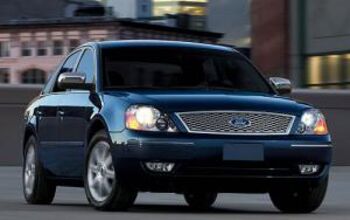Hammer Time: What's In Your Oil?
Two hundred thousand miles.
It’s a beautiful moment for many a car owner.
As for me? Well, I admit that I cheated when I saw that number flash by in my wife’s car back in March. Like many an enthusiast, I had bought it used and was planning on keeping her daily driver for the long haul.
The question for me was, “How long would the long haul be?” Since I buy, fix and sell a lot of vehicles, and have deeply imbibed the fluids of wisdom at the Bob Is The Oil Guy web site, I decided to live my life on the wild side.
I performed an oil analysis.
What I got back was a smorgasbord of technical information, and one pithy summation that went like this.
“STEVE – 200,000 miles? Please! This engine’s still a spring chicken. Metals look great here, so assuming she’s still running well and you’re not having any problems, then there is nothing about this sample that seems troublesome at all. Averages are based on about 7,600 miles on the oil. You could run your oil a bit longer, for sure. The TBN is kind of getting low (it’s down to 1.4 and 1.0 or less is low), but the TBN tends to drop more slowly the more use an oil sees, so it might hang on at this level for a while. The viscosity was fine assuming you used a 5W/20. Try 9k miles.”
I loved the spring chicken part. Boy that made my day. However that whole TBN remark threw me for a loop.
And what in the heck was a TBN in the first place? The BAD number???
Well, that’s when my quest for knowledge became a great big time suck. I went here, and later here. It was that second “here” which truly opened my eyes to what that TBN comment actually meant, and why I probably don’t want to delve any deeper into the inner workings of motor oil.
My engine was great. Case closed. Barring any unusual events, I was good to go for many more miles. I could extend my oil interval to 9,000 miles from 6,000 miles with a synthetic blend. Or maybe I could do a full 15k with a high performance full-synthetic engineered for longevity.
Mobil 1 EP? Amsoil? Deep Purple? Sorry.
The sad fact is that my wife drives a common-as-kudzu Prius with a light foot, and enough driving distance for the engine to always warm up. The local shop charges $20 for a synthetic blend and a quality filter. My net savings would be maybe $5 if I did it myself once a year with synthetic (her car holds a little less than 4 quarts.)
I spent $25 to figure all this out. So much ado about nothing. It was time to take the thermometer out of the motor oil, and worry about one less thing in my life.
My technical results are highlighted here. In the world where enthusiasts have to deal with the economics of keeping a car for a long time, an oil analysis can help you answer the uncertainties of a valvetrain’s health. But chances are, if your oil is regularly changed and you use products that are API-certified, there are better ways to spend your money.
If your car quits, chances are it won’t be your oil’s fault.
More by Steven Lang
Latest Car Reviews
Read moreLatest Product Reviews
Read moreRecent Comments
- El scotto No rag-top, no rag-top(s) = not a prestigious car brand. Think it through. All of the high-end Germans and Lexus have rag-tops. Corvette is really its own brand.World-leading engines. AMG, M, S and well Lexus is third-world tough. GM makes one of the best V-8s in the world in Bowling Green. But nooooo, noooo, we're GM only Corvettes get Corvette engines. Balderdash! I say. Put Corvette engines in the top-tier Cadillacs. I know GM could make a world-class 3.5 liter V-6 but they don't or won't. In the interior everything that gets touched, including your butt, has to feel good. No exceptions.Some think that those who pay above MSRP and brag about it are idiots. Go the opposite direction, and offer an extended 10-year 100,000-mile factory warranty. At a reasonable price. That's Acura's current business model.
- Carrera 2014 Toyota Corolla with 192,000 miles bought new. Oil changes every 5,000 miles, 1 coolant flush, and a bunch of air filters and in cabin air filters, and wipers. On my 4th set of tires.Original brake pads ( manual transmission), original spark plugs. Nothing else...it's a Toyota. Did most of oil changes either free at Toyota or myself. Also 3 batteries.2022 Acura TLX A-Spec AWD 13,000 miles now but bought new.Two oil changes...2006 Hyundai Elantra gifted from a colleague with 318,000 when I got it, and 335,000 now. It needed some TLC. A set of cheap Chinese tires ($275), AC compressor, evaporator, expansion valve package ( $290) , two TYC headlights $120, one battery ( $95), two oil changes, air filters, Denso alternator ( $185), coolant, and labor for AC job ( $200).
- Mike-NB2 This is a mostly uninformed vote, but I'll go with the Mazda 3 too.I haven't driven a new Civic, so I can't say anything about it, but two weeks ago I had a 2023 Corolla as a rental. While I can understand why so many people buy these, I was surprised at how bad the CVT is. Many rentals I've driven have a CVT and while I know it has one and can tell, they aren't usually too bad. I'd never own a car with a CVT, but I can live with one as a rental. But the Corolla's CVT was terrible. It was like it screamed "CVT!" the whole time. On the highway with cruise control on, I could feel it adjusting to track the set speed. Passing on the highway (two-lane) was risky. The engine isn't under-powered, but the CVT makes it seem that way.A minor complaint is about the steering. It's waaaay over-assisted. At low speeds, it's like a 70s LTD with one-finger effort. Maybe that's deliberate though, given the Corolla's demographic.
- Mike-NB2 2019 Ranger - 30,000 miles / 50,000 km. Nothing but oil changes. Original tires are being replaced a week from Wednesday. (Not all that mileage is on the original A/S tires. I put dedicated winter rims/tires on it every winter.)2024 - Golf R - 1700 miles / 2800 km. Not really broken in yet. Nothing but gas in the tank.
- SaulTigh I've got a 2014 F150 with 87K on the clock and have spent exactly $4,180.77 in maintenance and repairs in that time. That's pretty hard to beat.Hard to say on my 2019 Mercedes, because I prepaid for three years of service (B,A,B) and am getting the last of those at the end of the month. Did just drop $1,700 on new Michelins for it at Tire Rack. Tires for the F150 late last year were under $700, so I'd say the Benz is roughly 2 to 3 times as pricy for anything over the Ford.I have the F150 serviced at a large independent shop, the Benz at the dealership.


































Comments
Join the conversation
I've only seen two engines internally ruined: 1. My friend's Dodge Intrepid 2.7, which spun a bearing at 70k miles. No surprise there. 2. My other friend's 95 (?) Buick 3.8, which spun a bearing when the plastic timing gear teeth sheared off, traveled to the oil pan, and he restarted the engine after repairing it without cleaning out the pan. This car had about 80k miles. Better oil wouldn't have saved them, but better engineering might have.
Great write-up. I'm using the Amsoil 5w-30 alongside the nano-based Everglide EGS and I'm pretty impressed with this combination. I'm happy using Amsoil alone before, but my mpg has increased when I started using Everglide. It made my driving smoother and quieter too. Oil is indeed a huge factor in the longevity of your car.